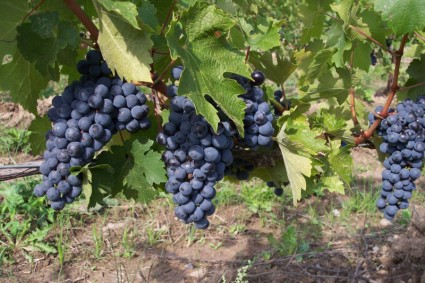The carmenere grape has an unusual story. At one time the grape was a mainstay in the vineyards of Bordeaux and often used for blending. In the 19th century growers stopped cultivating the grape (some believe the vines were wiped out by Phylloxera in the 1870s) and it was believed to be extinct. But in the 1990’s carmenere was “rediscovered” flourishing a world away in the vineyards of Chile. It is thought that the grape made its way to South America by way of cuttings mixed in with the more well-known merlot and cabernet.
Chilean wineries were selling enormous amounts of fruity, easy-drinking merlot — or so they thought. One day a viticulturist noticed an odd difference between the merlot vines planted in one vineyard compared to those planted in another. Not only were the plants different but also they were ripening at different times. After a few tests it was discovered that the merlot plants in one of the vineyards weren’t merlot at all but carmenere.
Chilean winemakers turned the near catastrophe into a well-timed opportunity to bring this unique wine to the world’s attention. Chile’s climate was ideal for carmenere and with excellent producers who pampered the fruit into its distinct style, no one can claim it was the result of an accident.
Carmenere can be compared to the taste of merlot. It has a very approachable style of low acid and soft tannins. It offers an almost green pepper and spice unlike most red wines. If you haven’t explored this grape you are in for a treat.
THE VALUES
- 2013 Root 1 Carmenere, Chile (about $12 retail)
- 2013 Puerto Viejo Carmenere, Chile (about $13 retail)
- 2011 Maquis Carmenere Colchagua Valley, Chile, (about $15 retail)
THE SPLURGES
- 2013 Montes Alpha Carmenere, Chile (about $24 retail)
- 2013 La Playa Axel Carmenere, Chile (about $25 retail)
- 2012 Antiyal Red Blend Maipo Valley, Chile (about $60 retail)
